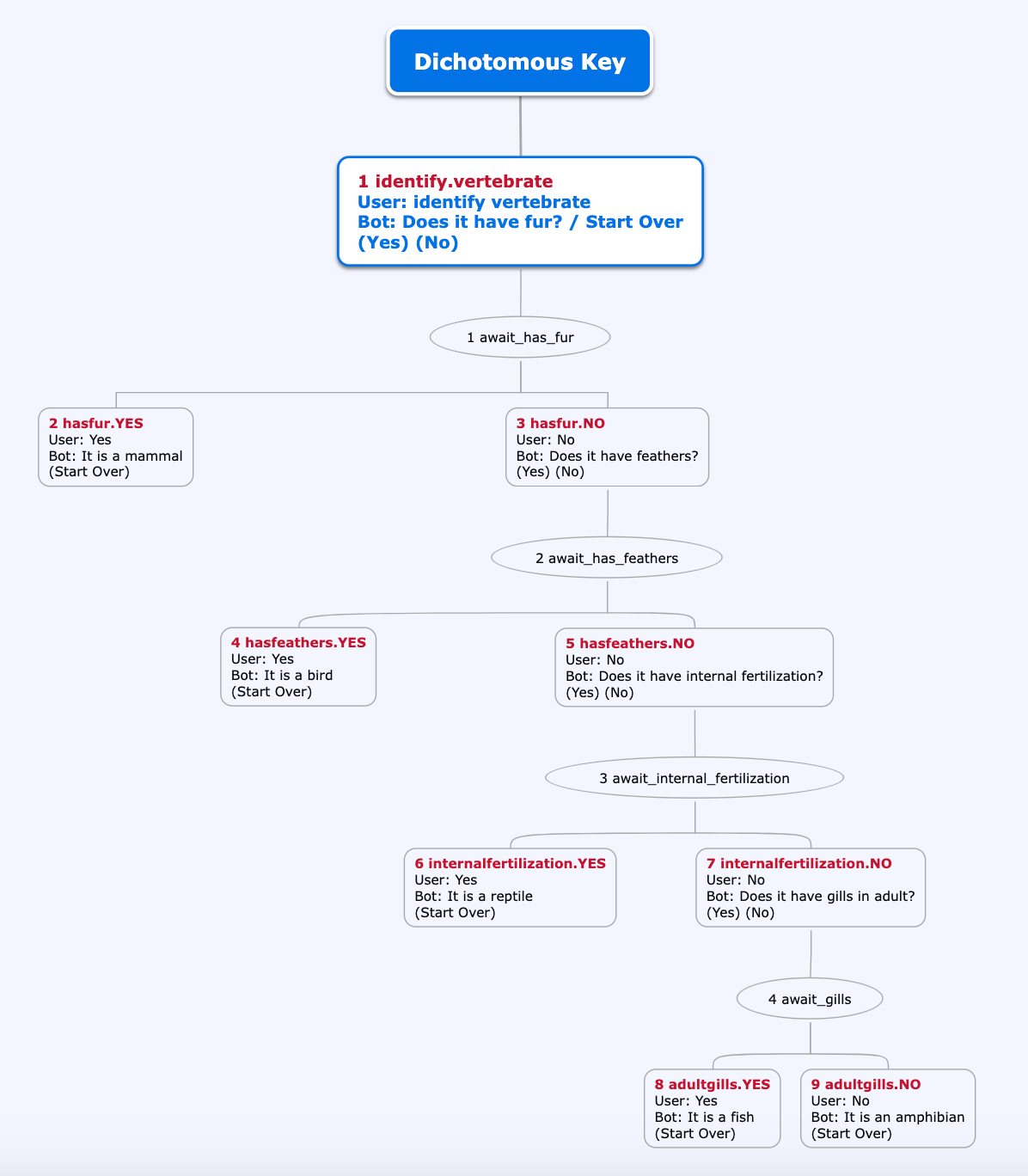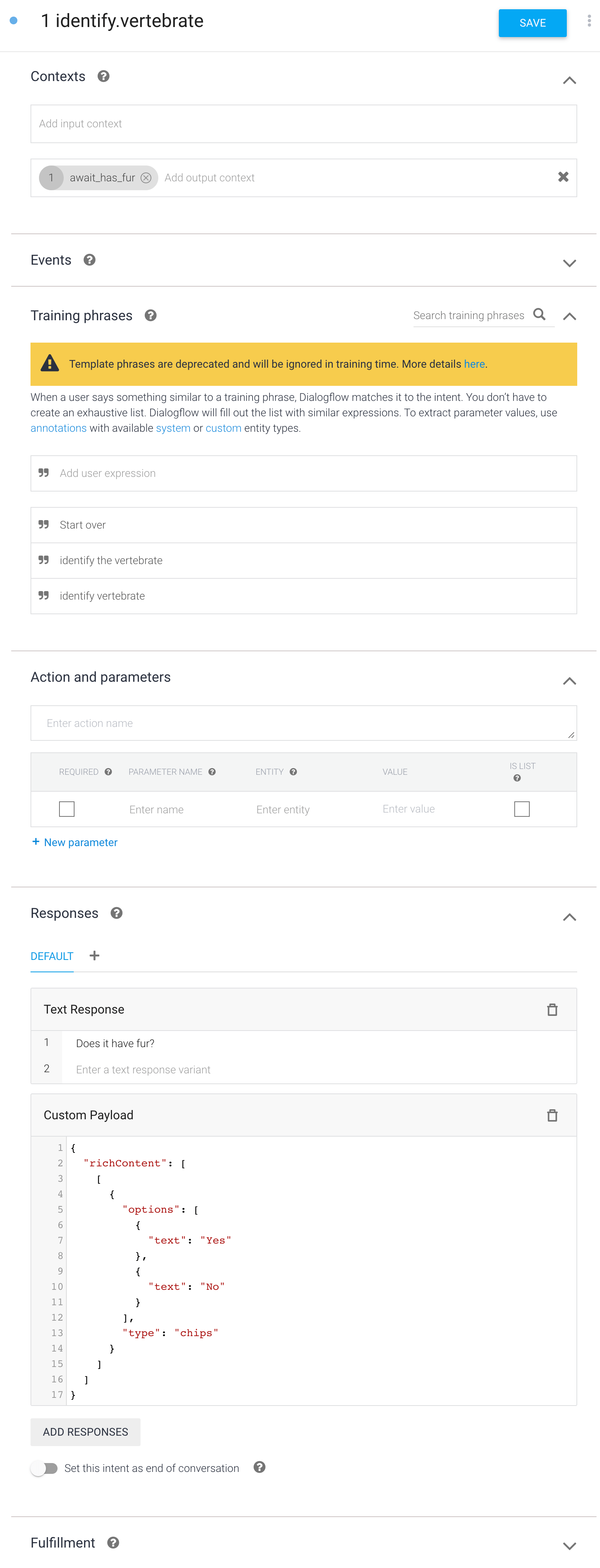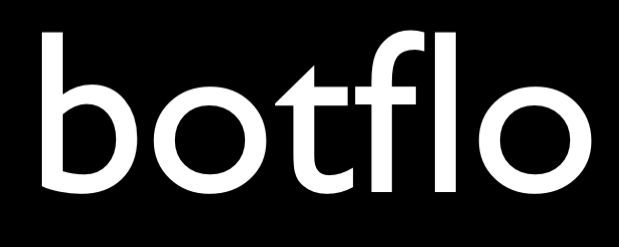06 Translate the flowchart into Dialogflow ES agent
Dialogflow Flowcharts
I made some updates to the flowchart from the last part
- added (Yes)(No) suggestion chips when bot asks a question (this is a Dialogflow Messenger bot)
- added an additional training phrase “Start Over” into intent 1
- changed the name of context 4

Let us translate the first intent – 1 identify.vertebrate

You copy the intent name, obviously.
Then check the input and output contexts. This intent has no input contexts, and it has an output context called await_has_fur. The user training phrase will be “identify vertebrate” and the bot’s response will be “Does it have fur?”
This is how we define the intent

Let us translate intent 2 – hasfur.YES
This intent does have an input context – await_has_fur, but has no output context.
Here is the intent definition.

In the case of intent 3, we have both an input and an output context.
Here is the intent definition

You can do the same for the rest of the intents and fully translate the flowchart into a Dialogflow agent.
Demo
Here is what the bot looks like in action

As you can see, if you are fairly rigorous about the flowchart definition, you can translate it into a Dialogflow ES agent pretty quickly.
